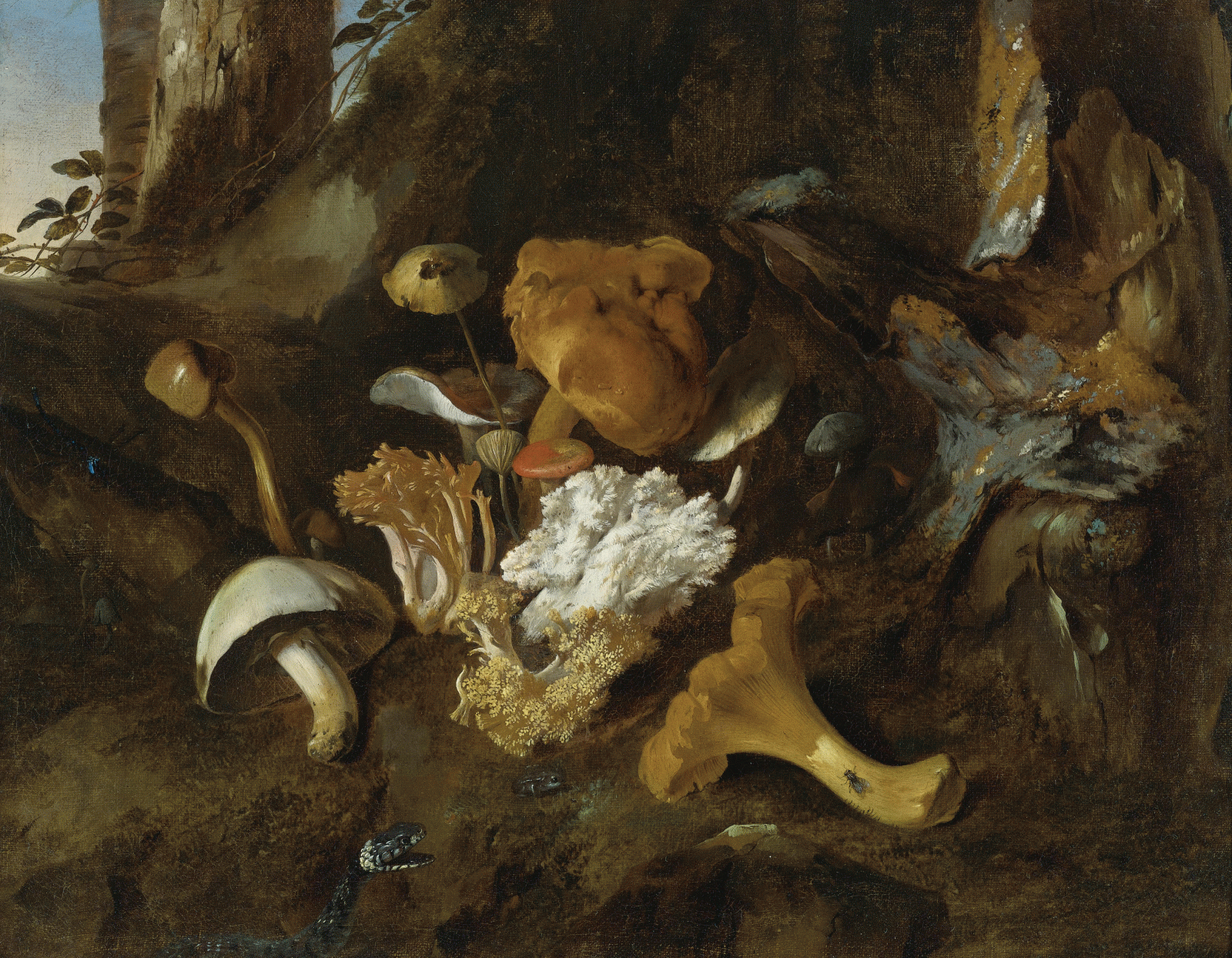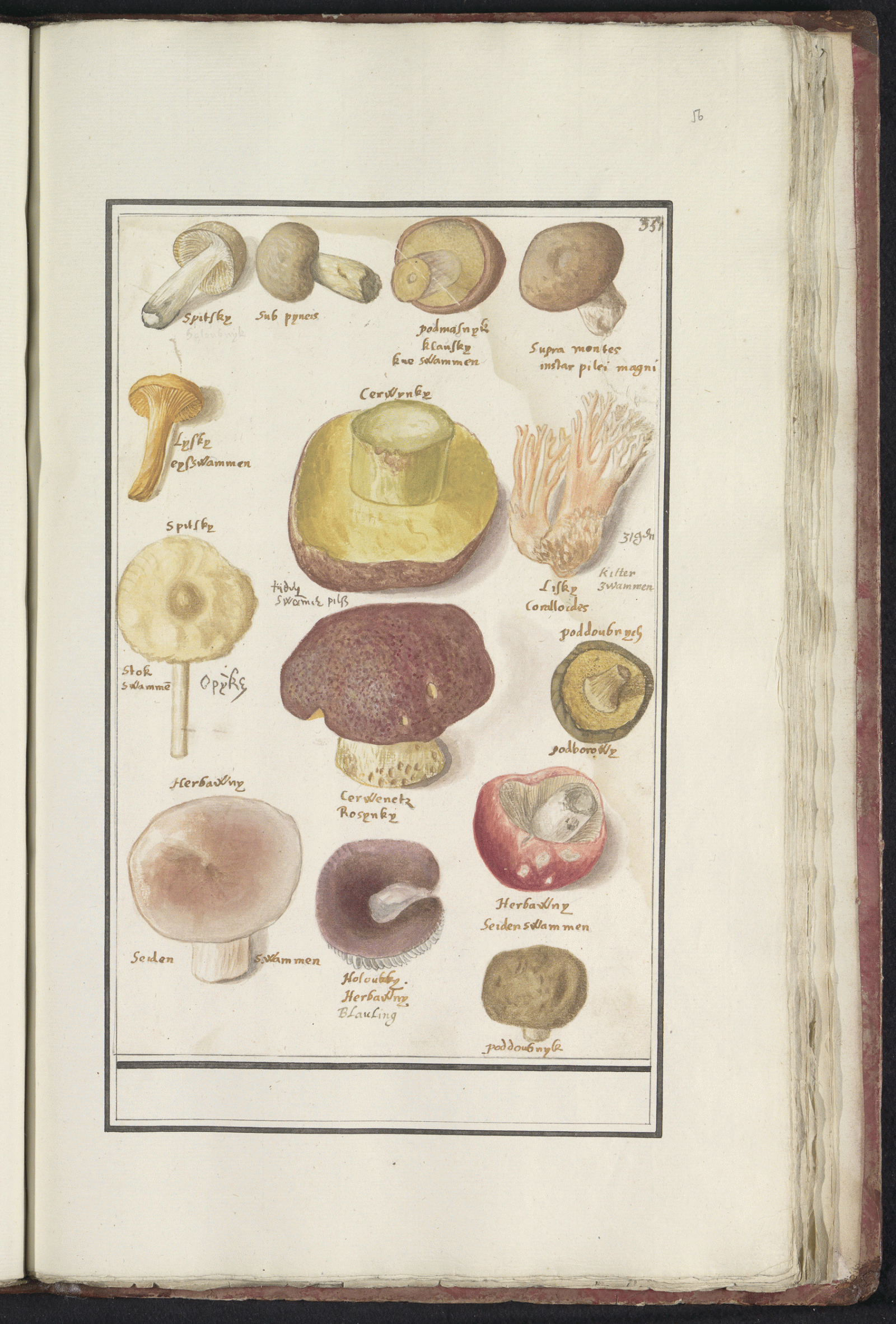Ricerca
Fungi in the Early Modern Low Countries: Image-forming, Ethnomycology and beyond
Lucas Vanhevel

Otto Marseus Van Schrieck, Forest floor still-life with mushrooms, butterflies and a snake, ca. 1657, oil on canvas, 32,6 x 41,2, sold at Sotheby's, New York, 27 Januar 2011, lot 241.
Even in the current climate of reactionary academic renegotiation of the disastrous traditional relational ontology of Man and nature, Fungi, comprising a natural kingdom of their own, as ubiquitous and essential to life as we know it as Plantae and Animalia, are still strongly neglected. Fungi are in fact more closely related to the kingdom of Animalia we belong to, than to Plantae. Not being able to photosynthesize on their own, they share a crucial aspect of the human condition, always and forever having to be dependent on plant intermediaries. As natures primary recyclers, disassembling large molecules into simpler ones, fungi play a vital and indispensable role in the web of life.
While recent scientific studies of fungi by authors like Suzanne Simard, Paul Stamets and Peter Wohlleben have been enlightening as to the crucial role fungi play and have always played in ecosystems and life in general, comprehensive approaches from cultural studies have been all too few and far in between.
With my research, it is my intention to contribute to filling this gap. Exploring the presence of this seemingly ever elusive natural kingdom within defined chronological and geographical boundaries I want to elucidate the vastly unstudied ways in which fungi have been entangled in cultural history. First, I want to approach the subject from my training as an art historian, charting and examining as much of the visual culture of mushrooms within this defined timeframe and geographical delineation as possible. Second I want to explore the subject from an ethnomycological approach, studying the ways in which early modern people have noticed and interacted with these organisms. And third I want to go beyond both art history and ethnomycology to study the vast ways in which fungi have been present and influential historical actors in this area and period even without anyone noticing directly.
This project is part of the Research and Fellowship Program 4A Laboratory: Art Histories, Archaeologies, Anthropologies, Aesthetics, a cooperation between the Kunsthistorisches Institut in Florenz and the Stiftung Preußischer Kulturbesitz.

Fungi in Anselmus De Boodt’s albums of naturalia, ca. 1600, now in the Rijksmuseum, Amsterdam. RP-T-BR-2017-1-11-56


